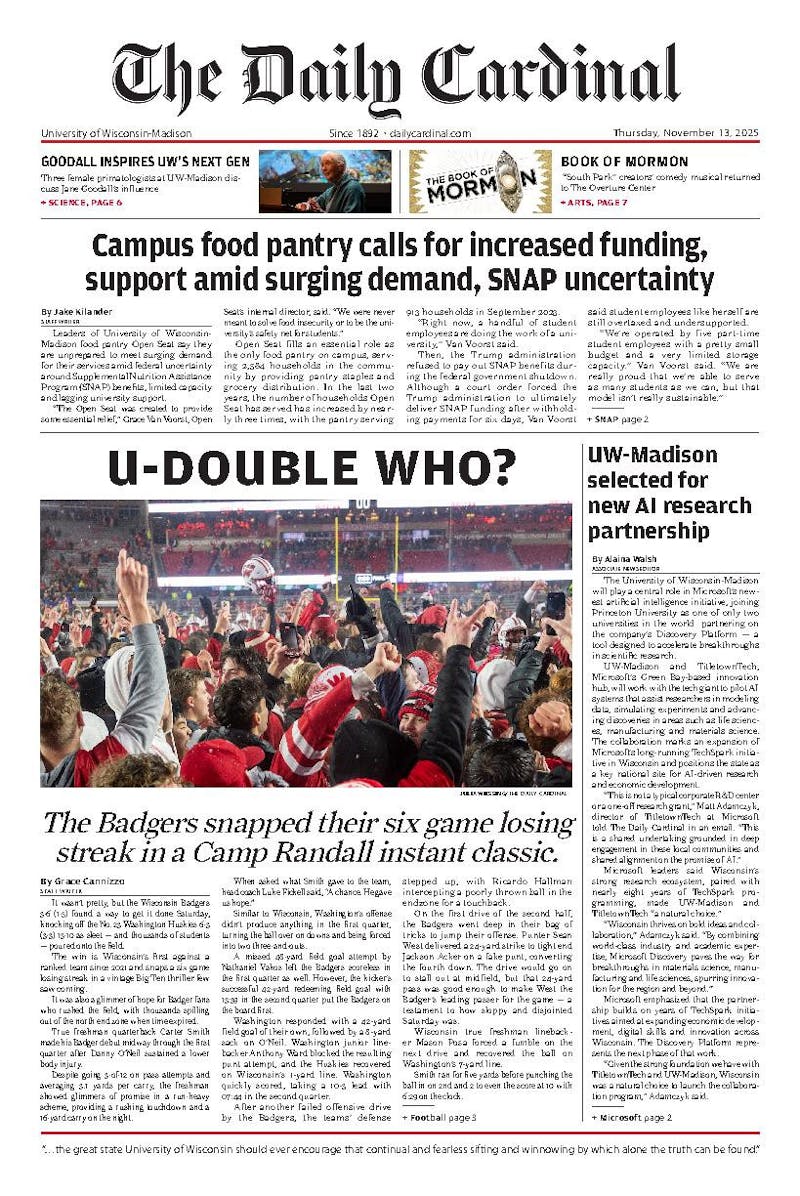University of Wisconsin-Whitewater Rock County Professor and director Ken Brosky shared frustration over recent two-year University of Wisconsin system campus closures in his documentary and after the screening at Union South.
“CLOSURE: The Dismantling of Wisconsin’s Colleges” follows communities impacted by branch closures since 2023, specifically UW-Platteville Richland and UW-Milwaukee at Washington County.
Brosky argues these closures mean Wisconsin is failing to live up to the Wisconsin Idea, a philosophy that Wisconsin’s universities should serve the public good and state.
UW-Richland was the first branch to close after just 54 students enrolled in its final year. Though community members rallied to keep the branch open by petitioning, holding town halls and meeting with UW System President Jay Rothman, the system vacated the campus in 2024.
“Richland is one of the poorest areas of the state. The two-year campus really was a lifeline over there,” Brosky said.
Last month, UW-Platteville announced the closure of its Baraboo Sauk County branch after student enrollment was less than half of what it initially expected for this year. Baraboo was the eighth UW branch campus to close or downsize since 2023 due to low enrollment.
In 2018, the UW-System’s four-year universities took over the 13 UW colleges now known as branch campuses. This merger was meant to help with declining enrollment, but Brosky said it did the exact opposite.
The branch campuses were actively marketing their programs toward high school students before the merger, Brosky said. They were consistently visiting high schools to recruit students, particularly ones who didn’t even plan on going to college in the first place. But after the merger, he said the four-year universities pulled almost all funding for branch recruiters and marketing.
“The UW colleges were very good at going out and recruiting people,” Brosky said. “But if [recruiters] aren’t in those high schools, there is no market for those two-year campuses.”
Brosky told The Daily Cardinal the Baraboo branch enrolls a lot of students who eventually transfer to UW-Madison. He said Baraboo had been great for students who couldn’t afford UW-Madison right after high school, and many students will miss out when the branch isn’t an option anymore.
The documentary was filmed prior to the announcement of the Baraboo closure but highlighted the campus’s commitment to the Wisconsin Idea amid other branches shutting down, and Brosky said the campus anticipated a $780,000 investment from Sauk County to increase enrollment and avoid closure.
“This is a county that cares deeply about the Wisconsin Idea and affordable access to higher education,” Brosky said in the documentary. The campus will officially close next spring.
When the Baraboo closure was announced, Rep. Karen DeSanto, D-Baraboo blamed the lack of state funding for the UW System from the Republican-controlled legislature. Brosky said he felt the same way.
“I blame first and foremost the Wisconsin Legislature,” Brosky said. “The former regents who were Walker appointees deserve a lot of blame too.”
Former Gov. Scott Walker cut $250 million from the UW System in 2015 after initially proposing $300 million. It was one of the largest cuts to higher education in university history and in the country. This year’s approved budget was the largest state funding increase by the legislature in 20 years. Gov. Tony Evers proposed $856 million in February, but he eventually agreed with Republican lawmakers on $256 million in July for the 2025-27 budget.
Still, Wisconsin ranks as one of the lowest states in higher education affordability. But Brosky said UW branches are able to keep tuition low, even when the four-year universities cut many of their programs. The branches are special, he said, because they offer liberal arts programs for less money and with smaller class sizes and they especially cater toward students who didn’t initially think they would go to college. To him, they are essential to the state and the Wisconsin Idea.
“There’s this notion that they can replace what the two-year colleges do,” Brosky said. “It’s not the same, it’s a radically different experience.”






